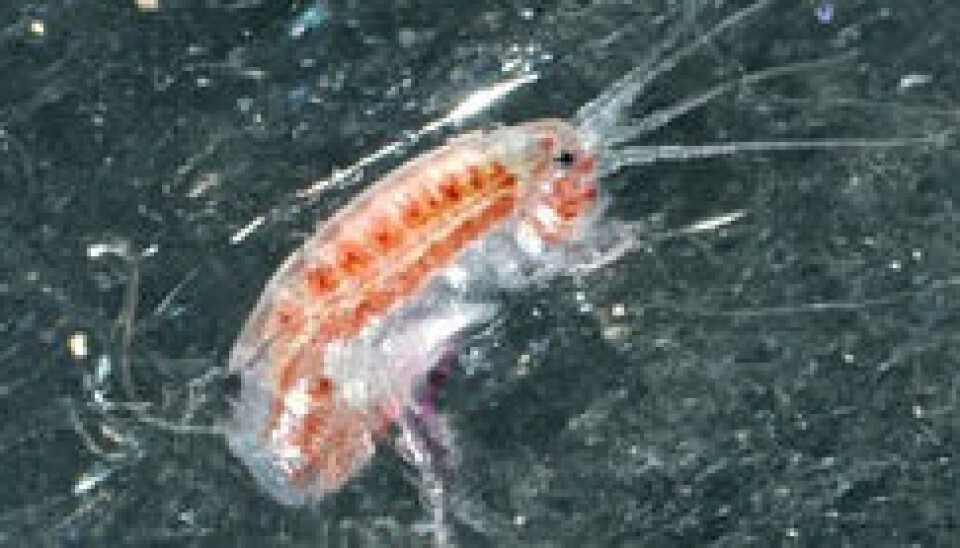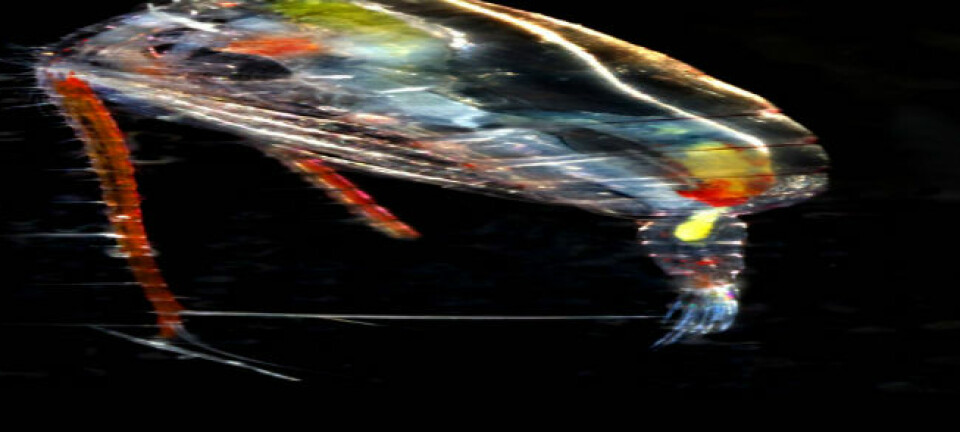An article from UNIS The University Centre in Svalbard

Arctic species will survive less ice
Some of the species in the Arctic have adapted to minimal ice cover in summer. The scientists call their hypothesis the “Nemo hypothesis”.
Denne artikkelen er over ti år gammel og kan inneholde utdatert informasjon.
Over the past few weeks several reports have emerged concerning the extent of the Arctic summer sea ice, documenting that we now, in 2012, are facing a historical and dramatic decline in the total abundance of sea ice in the Arctic.
Recent studies predict that the Arctic Ocean will have ice-free summers within the next 30 years which presents some unprecedented challenges for the ecosystems in the high north.
Not least the ice-associated crustaceans generally considered to spend their entire life on the underside of the Arctic sea ice.
However, at least for some of the keystone ice associated organisms, the implications may not be as obvious and detrimental as assumed until now, according to a new article published in Biology Letters.

The authors, from UNIS, University of Tromsø, Norwegian Polar Institute, Akvaplan-niva and University of Delaware, suggest instead that some species have a highly advanced lifecycle that facilitates their survival in ice-free waters, but also makes them able to return to areas with sea ice cover.
The scientists point to an unresolved paradox concerning the evolution and current distribution of ice associated organisms within the Arctic Ocean: How is it possible to retain a large and viable population of organisms totally dependent on sea ice when their habitat is annually reduced by up to 75-80 per cent through melting and the Transpolar Drift through the Fram Strait?
Adaptive survival strategy
"Based upon a unique Polar night expedition in the Fram Strait and Eurasian part of the Arctic Ocean last winter, a region in which there have been extremely few scientific expeditions during winter-time, the scientists made some very exciting discoveries regarding the adaptive and evolutionary biology of ice associated organisms," says professor Jørgen Berge.
He is a researcher at UNIS and University of Tromsø and lead author of the paper Retention of ice-associated amphipods: possible consequences for an ice-free Arctic Ocean.

One species, the Apherusa glacialis, is the most numerous of the ice associated amphipods and was found in abundance when the scientists did sampling between 200 and 2000 meters depths in January 2012.
These discoveries form the basis of a new conceptual hypothesis on how species, until now considered totally dependent on sea ice, have a highly advanced lifecycle that include both extensive vertical migrations in the water column as well as utilizing deep ocean currents to retain their position within the Arctic Ocean.
"We provide a new conceptual understanding of an intimate connection between the under-ice crustaceans and the deep Arctic Ocean currents." says Berge.
"We suggest that a until now unknown downward vertical migration of egg carrying animals, followed by pole ward transport in deep ocean currents is an adaptive trait of ice fauna that both increases survival during ice free periods of the year and enables recolonization of sea ice when they ascend within the Arctic Ocean"
From an evolutionary perspective, this may have been a successful adaptive strategy in a more seasonally ice-covered Arctic, as experienced several times during the past 12,000 years, some reports indicate that the Arctic Ocean was void of summer sea ice as late as 8000 years ago.
"Our findings not only provide a basic new understanding of the adaptations and biology of the ice associated organisms within the Arctic Ocean, it may ultimately change the perception of ice fauna as a biota imminently threatened by the predicted disappearance of perennial sea ice," explains Berge.
The "Nemo hypothesis"
The scientists refer to the hypothesis as the "Nemo hypothesis" based on an analogy to the Disney movie in which Nemo’s father use deep ocean currents as a vector for transportation.
"Our hypothesis refer to a similar mechanisms, that enable ice-associated organisms that are released from melting sea ice to actively (or passively) move into depth layers where the northernmost branch of the Gulf Stream System will effectively transport them back into the Arctic Ocean," says the researcher.
According to him, these organisms were previously considered to be passively exported either out the Fram Strait or down to depths when released from melting sea ice – either which, they were considered as being doomed and lost from their habitat on which they depend to survive.
Through the Nemo hypothesis, the scientists offer a new and exciting perspective that, although still based on a limited dataset, might change the perception of the ice associated organisms and their future in an Arctic Ocean potentially void of summer sea ice within the next few decades.
































